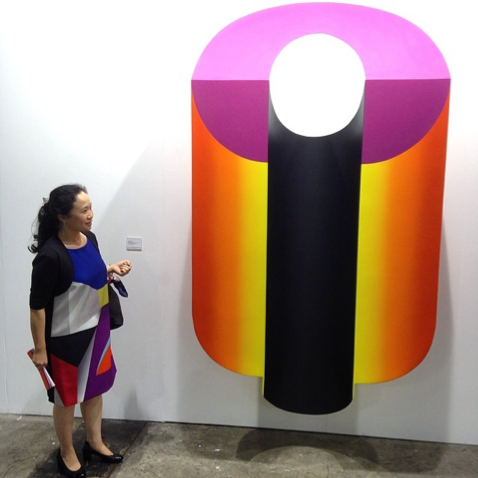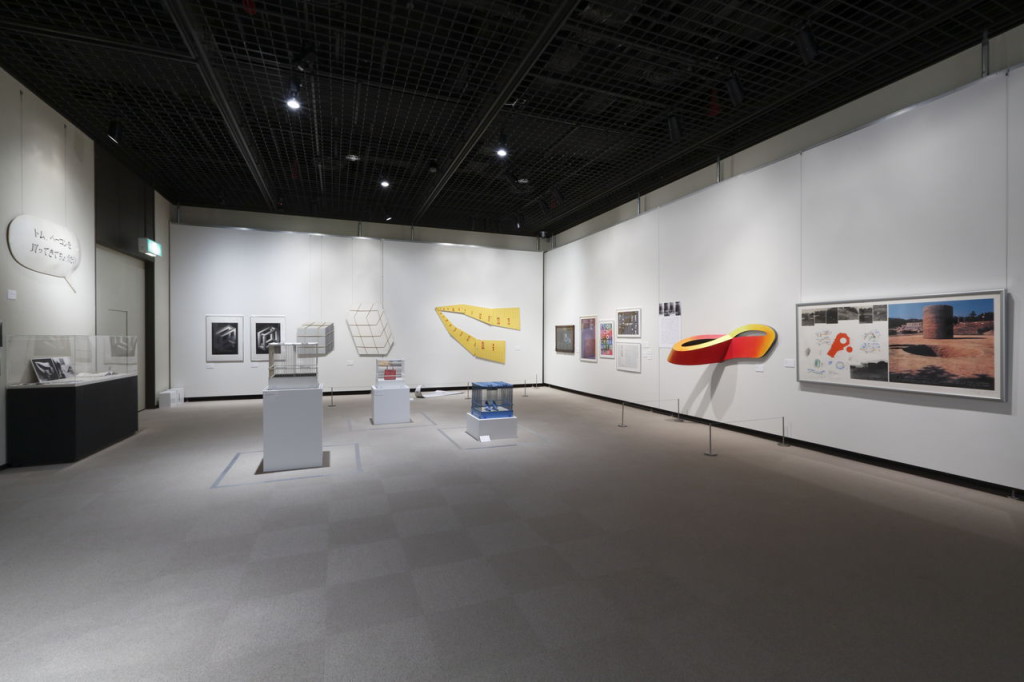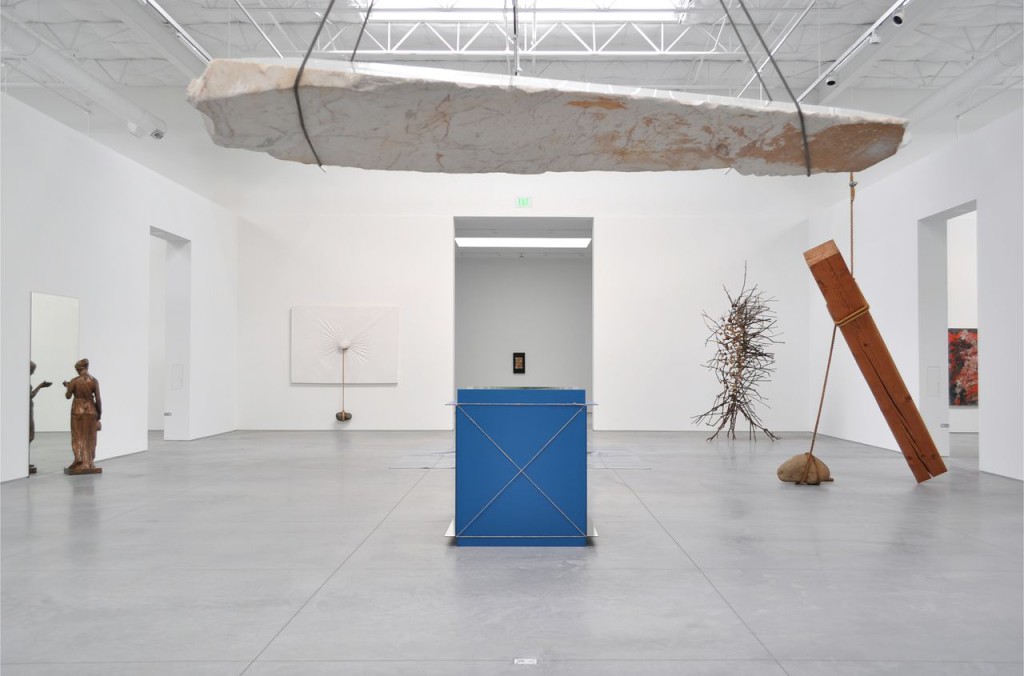-
test post
test
-
PROPORTIO
May 9 – November 22, 2015
Palazzo Fortuny, San Marco, 3780, VeniceCurated by Axel Vervoordt and Daniela Ferretti
Organized by the Axel & May Vervoordt Foundation and the Fondazione Musei Civici di VeneziaPress release from the Axel & May Vervoordt Foundation:
The exhibition PROPORTIO examines the role that proportion plays in our lives and the complex universe in which we live. By examining wide-ranging and diverse representations found in art, nature, physics, economics, history, science, music, medicine, and many other subjects, the study of proportion uncovers the natural patterns that are used to create everything in the material world.
Proportion is not only a question of numbers. Nor is it a simple comparison of measurements and dimensions in relation to a whole. According to Plato, the definition of proportion is the transition from duality to unity. It’s the investigation of how elements and patterns are connected and interconnected across disciplines. It’s the investigation of how we, as humans, perceive those patterns through our senses, as well as through our intuition. It’s also an exploration of how universal proportions guide our understanding of creation and the dynamic dance between order and chaos.
Throughout the course of known human history, the knowledge of proportions and sacred geometry in particular, has been applied across many civilizations for thousands of years. The sophisticated knowledge of sacred geometry, especially the golden ratio, was considered highly advanced and closely related to secretive spiritual wisdom and religious traditions. As a result, its use was controlled, because it was thought that it’s misuse might have undesirable consequences. In the Western world, the knowledge of sacred geometry was so secret that it was intentionally guarded for hundreds of years and may have been purposefully forgotten or discarded.
What was known? How was this knowledge used in the past? How can it help us to understand the world around us today? As an exhibition, the aim of PROPORTIO is to re-start a contemporary dialogue surrounding the lost knowledge of proportions and sacred geometry.
PROPORTIO features specially commissioned artworks by contemporary artists, 20th century masterpieces, Old Master paintings, archaeological artefacts, as well as architectural models and a large library of historical books on proportions. All these works provide a lens to help us see what proportion can teach us about the essential design of the present and how we can use this knowledge to create a blueprint for the future. This exhibition is an opportunity to explore universal proportions and an invitation to reflect upon the interconnectedness of our universe.LIST OF PARTICIPATING ARTISTS
Marina Abramovic, Carla Accardi, Josef Albers, Carl Andre, Rodolfo Aricò, Ida Barbarigo, Massimo Bartolini, Domenico Bianchi, Cristiano Bianchin, Alberto Biasi, Bae Bien-U, Alighiero Boetti, Otto Boll, Agostino Bonalumi, Michaël Borremans, Sandro Botticelli, Lucia Bru, Markus Brunetti, Jean-Marie Bytebier, Pierpaolo Calzolari, Francesco Candeloro, Antonio Canova, Vincenzo Castella, Eduardo Chillida, Chang-Sup Chung, Niccolò Codazzi, Viviano Codazzi, Gianni Colombo, Dadamaino, Hanne Darboven, Berlinde De Bruyckere, Raoul De Keyser, Riccardo De Marchi, Marta Dell’Angelo, Gabriele Devecchi, Maurizio Donzelli, Jan Dries, Arthur Duff, Luciano Fabro, Philippe Favier, Giorgia Fiorio, Henri Foucault, Anne-Karin Furunes, Alberto Giacometti, Ando Gilardi, Fernanda Gomes, Antony Gormley, Kees Goudzwaard, Gotthard Graubner, Aldo Grazzi, Franco Guerzoni, Chong Hyun Ha, Erwin Heerich, Michael Heizer, Samantha Holmes, Sadaharu Horio, Akiko Horio, Ryoji Ikeda, Norio Imai, Robert Indiana, Ann Veronica Janssens, Francesco Jodice, Ilya et Emilia Kabakov, Anish Kapoor, Ellsworth Kelly, William Kentridge, Anselm Kiefer, Kimsooja, Harry Kivijärvi, Susan Kleinberg, Wolfgang Laib, Edoardo Landi, Le Corbusier, Sol Lewitt, Richard Long, Nino Longobardi, Heinz Mack, Brice Marden, Agnes Martin, Christian Megert, Richard Meier, Fausto Melotti, Marisa Merz, Mario Merz, Amedeo Modigliani, Giorgio Morandi, François Morellet, Shuji Mukai, Rei Naito, Yuko Nasaka, Shirin Neshat, Louise Nevelson, Ben Nicholson, Renato Nicolodi, Mario Nigro, Gioberto Noro, Hans Op de Beeck, Marie Orensanz, Mimmo Paladino, Pablo Palazuelo, Izhar Patkin, Masaomi Raku, Kurt Ralske, Robert Ryman, Lucio Saffaro, Fred Sandback, Giuseppe Santomaso, Tomás Saraceno, MariaTeresa Sartori, Stéphane Sautour, Nobuo Sekine, Conrad Shawcross, Yasuhiro Shimakawa, Kazuo Shiraga, Gabriel Sierra, David Simpson, Bosco Sodi, Ettore Spalletti, Dominique Stroobant, Takis, Antoni Tàpies, Marco Tirelli, Gunther Uecker, Camiel Van Breedam, Koen Van den Broek, Dom Hans Van der Laan, Koen Vanmechelen, Grazia Varisco, Victor Vasarely, Jef Verheyen, Nanda Vigo, Bill Viola, Rachel Whiteread, Maaria Wirkkala, Hyong-Keun Yun, Gianfranco Zappettini and Raphaël Zarka.
-
Art Basel Hong Kong
Art Basel—Hong Kong, March 15—18, 2014

Hong Kong Convention and Exhibition Centre (HKCEC)
1 Expo Drive, Wanchai
Hong Kong, China
Booth 3D04 (Blum and Poe), 3C27 (Tokyo Gallery+BTAP) -
Other Primary Structures
Jewish Museum, New York, NY, March 14, 2014 — August 3, 2014

Installation view, Other Primary Structures, Jewish Museum, New York
David Heald/The Jewish Museum

Phase of Nothingness—Water, included in "Other Primary Structures."
Installation view, Requiem for the Sun: The Art of Mono-ha, Blum and Poe, Los Angeles, February 25 - April 14, 2012
Joshua White/Blum and PoeFrom exhibition website:
The sculptors represented in this exhibition are not consciously allied in a school or in a specific movement, but they do share a stylistic tendency by reason of their interest in “primary” artistic structure. The sculpture is often architectonic, if not architectural. Most of the work does not use base or pedestal, some are oriented to the walls, and some even to the ceiling. The artist feels free to utilize and activate the space of a room or the outdoors according to the internal necessities of the work.
The generally large scale of the work and its architectural proportions allow the sculpture to dominate the environment. At times the sculpture intrudes aggressively on the spectator’s space, or the spectator is drawn into sculptural space. Often the structure acts ambiguously, creating a spatial dislocation for the spectator with complex meanings.
These structures are also conceived as “objects,” abstract, directly experienced, highly simplified and self-contained. There is no overt surrealistic content and the anthropomorphic is rejected. Shape, color and material have a physical concreteness and unity. Generally, bright and vibrant color is in evidence, and when color is not applied, the intrinsic color of the sculptural material asserts itself. The new sculpture rejects patina and embellishment; color acts like a skin on a surface which is always smooth and never worked by hand or textured.
The sculpture has benefited from modern technology and industry. The artist can now conceive his work, and entrust its execution to a manufacturer whose precision and skill conveys the standardized “impersonality” that he may seek. Plastics, fibreglass, aluminum, fluorescent light have allowed the sculptor to formulate ideas and create dramatic visual effects that at any other time would have been impossible; as one artist has put it: “We are about to redesign the world.”
All of the sculptors in this exhibition share an uncompromising seriousness and open spirit of inquiry. The gesture behind their art is perhaps one of its most important aspects. They are anxious to find out what sculpture is and to discover how to make it. The new sculptors are transforming contemporary esthetics, many in response to the new world shaped by Space, Science, and Technology. Their work demands our attention and active participation.
Kynaston McShine
Curator of Painting and Sculpture, Jewish Museum, New York -
Genshoku and Ishiko Junzo 1966–1971: The Memories of Groundbreaking Pioneers
Shizuoka Prefectural Museum of Art, Shizuoka, Japan, February 1-March 23, 2014


Examining the legacy of the “Genshoku” artist group, formed in Shizuoka in 1966, and their relation with the art critic Junzo Ishiko. This exhibition highlights the developments of this collective over the 60s and 70s through a collection of major works, including works especially reconstructed for this show, combined with articles from the Ishiko collection, writings, photographs and other recordings providing an insight into this period of cutting edge work.
-Tokyo Art Beat
-
Nobuo Sekine
Nobuo Sekine, Blum & Poe, Los Angeles, January 11, 2014 — February 15, 2014

-Exhibition press release:
Blum & Poe is very pleased to present a large survey exhibition of Nobuo Sekine, one of the key figures of Mono-ha, a group of Tokyo-based artists who radically changed the direction of Japanese art during the late 1960s and early 1970s by examining the interrelationships among natural and industrial materials, space, and perception. This is Sekine’s first solo show with the gallery and his first solo presentation in North America following his participation in the award-winning survey Requiem for the Sun: The Art of Mono-ha, curated by Mika Yoshitake, assistant curator at the Hirshhorn Museum and Sculpture Garden, held at Blum & Poe and Gladstone Gallery, New York in 2012.
The emergence of Mono-ha is widely attributed to Sekine’s iconic Phase—Mother Earth (1968), a cylindrical hole in the ground, seven feet wide and nine feet deep, accompanied by an adjacent cylindrical tower of earth molded into exactly the same dimensions, exhibited at the 1st Contemporary Sculpture Exhibition at the Suma Rikyu Park in Kobe. Phase—Mother Earth was an early manifestation of Sekine’s engagement with the concept of “phase” in topology, a branch of mathematics concerned with abstract space and connectedness — specifically the properties that are preserved under continuous deformations. Through this discipline, Sekine perceives form, matter, and space as infinitely malleable. His early Topology Series made of bent plywood and bright, neon colors exemplifies these concepts and transforms the viewer’s visual perception.
The subtle manipulation of natural materials is most prominent in three important bodies of work on view in the gallery: Phase of Nothingness—Cut Stone, Phase of Nothingness—Cloth and Stone, and Phase of Nothingness—Stone and Neon. Sekine has variously cut, tied, and altered stones to draw attention to their physical weight and surface properties. The Projetto Series of drawings from the early 1970s serve as studies for many of the Phase of Nothingness works and reveal the artist’s design processes for some of his public sculpture.
Central to the exhibition at Blum & Poe will be Phase of Nothingness—Black (1978–79). This little-known series of black FRP sculptures contrasts the natural and the man-made, ranging from rough, clod-like forms that lie low on the floor to highly polished, geometric shapes that stand tall like totems. These works mark a crucial shift in Sekine’s practice — away from a focus on raw materials and malleability toward the surface qualities of solidified forms. Sekine deliberately made it difficult to identify the material used to create these works — at first glance it is not evident whether they are made of stone, glass, metal, or plastic. When installing these works, Sekine considers their placement to be a “topological scene” governed by aesthetic principles similar to those found in Zen rock gardens — namely, asymmetric arrangements of disparate elements that combine to represent a broader landscape of seas, islands, and mountains.
-
Prima Materia
Punta della Dogana, Venice, May 30, 2013 — December 31, 2014

–Exhibition press release:
Ubiquitous and graphic media images of war, protest, and social upheaval provided the backdrop for artistic breakthroughs of late 1960s, much of which was expressed in abstraction— sometimes emptiness. That era also opened new vistas on social equality and shared concerns, such as the condition and future of our environment. Today, science and technology offer social connectivity on a global scale, constantly available images of every kind, and the promise of technological solutions for longevity, and renewable energy. At the same time, we still live in an atmosphere of anxiety, often faced with invisible and abstract adversaries— among them, global warming and technological terrorism. We are immersed in a cacophony of media image and sound.
If the goal of most of nineteenth century art was truth through beauty and balance, the art of the late twentieth and our own century tends toward a coexistence of extremes—of abstraction and surrealism, emptiness and chaos, negation and spectacle, high and low. Artistically, we live in an age of global pluralism. Four basic elements of painting, sculpture, installation, and performance are all alchemized by the prima materia of media, not only the substance of film or video or the Internet, but the means by which it is disseminated and discussed globally.
Medieval texts on alchemy suggest hundreds of diverse descriptions and definitions of the prima materia, the prime matter—separate from, or encompassing, earth, air, fire, and water; or the formless base of all matter; containing the soul and the body, the sun and the moon; love and light, imagination and consciousness; or urine, blood, or dirt. It was searched for in the darkest soil of the forest, and inside the body. It is the primal chaos that exists before time and all possibilities of the future. Western and Eastern, it is the Tao of Lao Tzu’s Tao te Ching; or, in science, perhaps the dark matter that makes up most of our universe. The definitions of this medium that carries all of the elements are diverse by cultural perspective or personal identity. Sometimes circularly represented as a serpent eating its tail, the prima materia—essence, everything and nothing, everywhere and nowhere—takes many forms.
Curators of the exhibition: Caroline Bourgeois and Michael Govan -
Parallel Views: Italian and Japanese Art from the 1950s, 60s, and 70s
The Warehouse, The Rachofsky House, Dallas, Feb 1, 2013 — Oct 31, 2013

Parallel Views: Italian and Japanese Art from the 1950s, 60s, and 70s aims to show connections between the work of a diverse range of artists from two geographic locations – Italy and Japan – during the early post-war period. Artists from groups such as Arte Povera, Gutai, and Mono-ha are included in the exhibition. Works on view are part of The Rachofsky Collection, The Amy and Vernon Faulconer Collection, and the Dallas Museum of Art, along with a number of other collections.
-
Focus on Nobuo Sekine
Dallas Museum of Art, June 1-August 27, 2012

The Museum recently acquired a group of works by artists of the Mono-Ha movement, the successor to Gutai. Founded by Nobuo Sekine and Lee Ufan, Mono-ha, which translates roughly as “School of Things,” was a Tokyo-based contemporary art movement that developed in the late 1960s. Mono-ha aimed to “eradicate the remnants of Modernism”; its artists often juxtaposed natural and industrial material, such as stone, wood, water, steel panels, oil, and rubber, to construct new relationships among works in relation to site and location. Currently on view through August 27 in the entrance to the Hoffman Galleries are three of the recently acquired works by Nobuo Sekine. Throughout his career, Sekine has been deeply interested in exploring the notion of “phase,” a concept borrowed from the mathematical field of topology, which examines the continuity and connectivity of forms. Each of the works on view, from the artist’s Phase series, investigates these topological concepts through the use of optical illusion, equivalence, and tension.